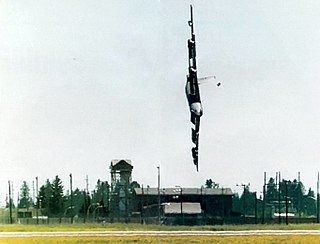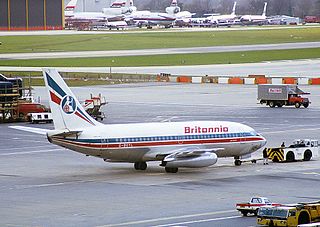
Delta Air Lines Flight 1141 was a scheduled domestic passenger flight between Dallas/Fort Worth, Texas and Salt Lake City, Utah. On August 31, 1988, the flight, using a Boeing 727-200 series aircraft, crashed during takeoff, killing 14 of the 108 people on board and injuring 76 others.

UTA Flight 141 was a chartered international passenger flight operated by Guinean regional airline Union des Transports Africains de Guinée, flying from Cotonou Airport in Cotonou, Benin, to Kufra Airport in Kufra, Libya. On 25 December 2003, the aircraft crashed into the Bight of Benin, killing 141 people, most of whom were Lebanese. Shortly after the crash, 35 survivors were found by a search and rescue team. Some of them were pronounced dead upon reaching the hospital.

Northwest Airlines Flight 255, a McDonnell Douglas MD-82, crashed shortly after takeoff from Detroit Metropolitan Airport on August 16, 1987, at about 8:46 p.m. EDT, killing all six crew members and 148 of its 149 passengers, along with two people on the ground. The sole survivor was a 4-year-old girl who sustained serious injuries. It was the second-deadliest aviation accident at the time in the United States. It is also the deadliest aviation accident to have a sole survivor.

Continental Airlines Flight 1713 was a commercial airline flight that crashed while taking off in a snowstorm from Stapleton International Airport in Denver, Colorado on November 15, 1987. The Douglas DC-9 airliner, operated by Continental Airlines, was making a scheduled flight to Boise, Idaho. Twenty-five passengers and three crew members died in the crash.

Pilot error generally refers to an accident in which an action or decision made by the pilot was the cause or a contributing factor that led to the accident, but also includes the pilot's failure to make a correct decision or take proper action. Errors are intentional actions that fail to achieve their intended outcomes. Chicago Convention defines accident as "An occurrence associated with the operation of an aircraft [...] in which [...] a person is fatally or seriously injured [...] except when the injuries are [...] inflicted by other persons." Hence the definition of the "pilot error" does not include deliberate crash.

Copa Airlines Flight 201 was a regularly scheduled passenger flight from Tocumen International Airport in Panama City, Panama to Alfonso Bonilla Aragón International Airport in Cali, Colombia. On 6 June 1992, the Boeing 737-204 Advanced operating the route rolled, entered a steep dive, disintegrated in mid-air, and crashed into the jungle of the Darién Gap 29 minutes after takeoff, killing all 47 people on board. The in-flight break-up was caused by faulty instrument readings and several other contributing factors, including incomplete training.

USAir Flight 5050 was a passenger flight that crashed on takeoff from LaGuardia Airport in Queens, New York. As the plane took off from LaGuardia's runway 31, the plane drifted to the left. After hearing a loud bang, the pilots attempted to abort the takeoff, but were unable to stop the plane short of the end of the runway. The plane continued past the end of the runway and plunged into Bowery Bay. Two passengers were killed.

Trans World Airlines (TWA) Flight 159 was a regularly scheduled passenger flight from New York City to Los Angeles, California, with a stopover in Cincinnati/Northern Kentucky International Airport, Kentucky, that crashed after an aborted takeoff from Cincinnati on 6 November 1967. The Boeing 707 attempted to abort takeoff when the copilot became concerned that the aircraft had collided with a disabled DC-9 on the runway. The aircraft overran the runway, struck an embankment and caught fire. One passenger died as a result of the accident.

Aviation Development Company Airlines (ADC) Flight 53 was a scheduled passenger flight operated by ADC Airlines that crashed on 29 October 2006 shortly after take-off from Nnamdi Azikiwe International Airport in Abuja, Nigeria, at 11:30 am local time. Immediately after takeoff from Abuja, the Boeing 737 contacted the ground, broke up and caught fire in a corn field. The flight carried 100 passengers and 5 crew. Muhammadu Maccido, the Sultan of Sokoto and spiritual leader of Nigeria's Muslims, the sultan's son, Senator Badamasi Maccido, Dr Nnennia Mgbor, the first ever female West African ENT surgeon, and Abdulrahman Shehu Shagari, son of former president Shehu Shagari, were on the passenger list. 96 people were killed and nine people survived, among those the 3 daughters of Ibrahim Idris, governor of Kogi.

TWA Flight 843 was a scheduled a Trans World Airlines passenger flight that crashed after an aborted takeoff from John F. Kennedy International Airport to San Francisco International Airport (California) in July 1992. Despite an intense fire after the crash, the crew was able to evacuate all 280 passengers from the aircraft. There was no loss of life, though the aircraft was destroyed by the fire.
Several aviation incidents and accidents have occurred in which the control surfaces of the aircraft became disabled, often due to failure of hydraulic systems or the flight control system. Other incidents have occurred where controls were not functioning correctly prior to take-off, either due to maintenance or pilot error, and controls can become inoperative from extreme weather conditions. Aircraft are not designed to be flown in such circumstances, however a small number of pilots have had some success in flying and landing aircraft with disabled controls.

Palair Macedonian Airlines Flight 301 was a scheduled international passenger flight to Switzerland's Zurich-Kloten Airport from Skopje International Airport, Skopje, which crashed shortly after take off on March 5, 1993. The Fokker 100 was operated by Palair, the then national airline of Macedonia.

Aeroflot Flight 2415 was a regularly scheduled passenger flight from Moscow to Leningrad that crashed shortly after takeoff on 28 November 1976. The cause of the accident was attributed to crew disorientation as a result of artificial horizon failure in low visibility conditions.

Aeroméxico Connect Flight 2431 (SLI2431/5D2431) was a Mexican domestic scheduled passenger flight bound for Mexico City that crashed on takeoff from Durango International Airport on July 31, 2018. Shortly after becoming airborne, the plane encountered sudden wind shear caused by a microburst. The plane rapidly lost speed and altitude and impacted the runway, detaching the engines and skidding to a halt about 1,000 feet (300 m) beyond the runway. The plane caught fire and was destroyed. All 103 people on board survived, but 39 passengers and crew members were injured.













